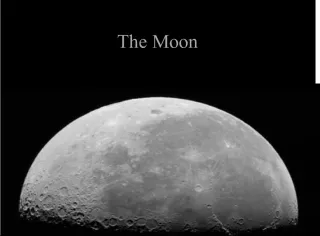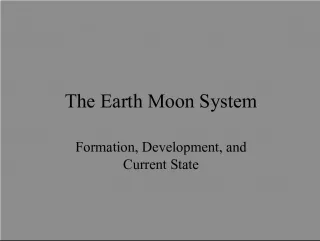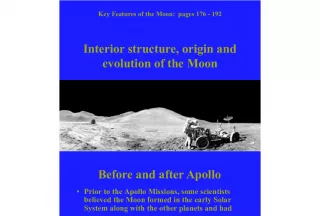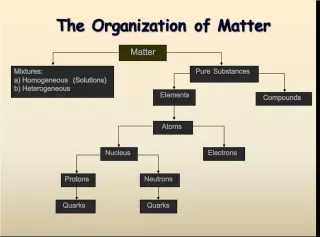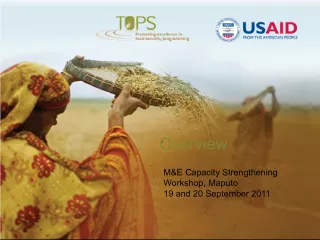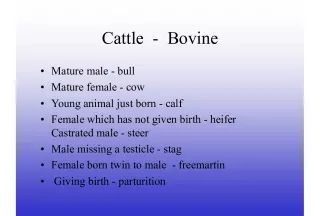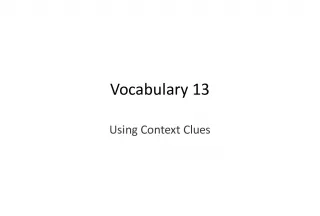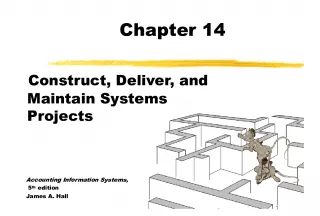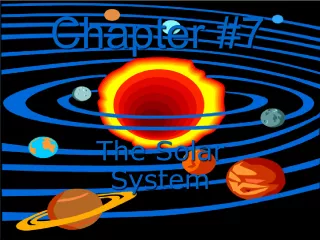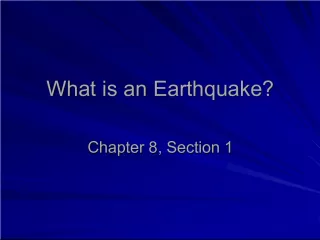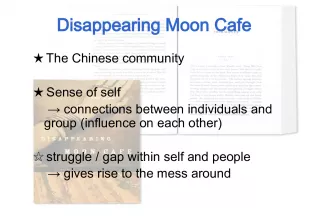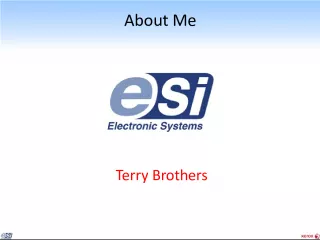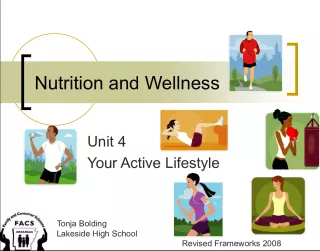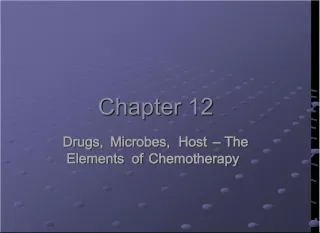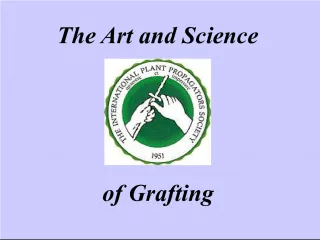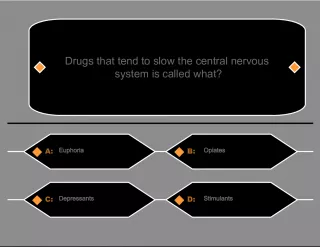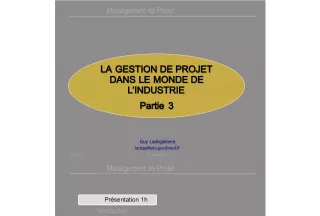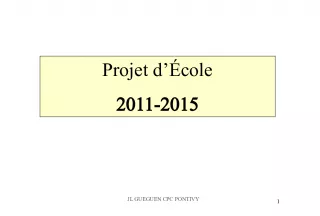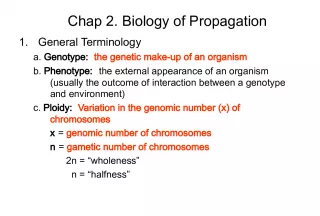Moon Phases and Terminology
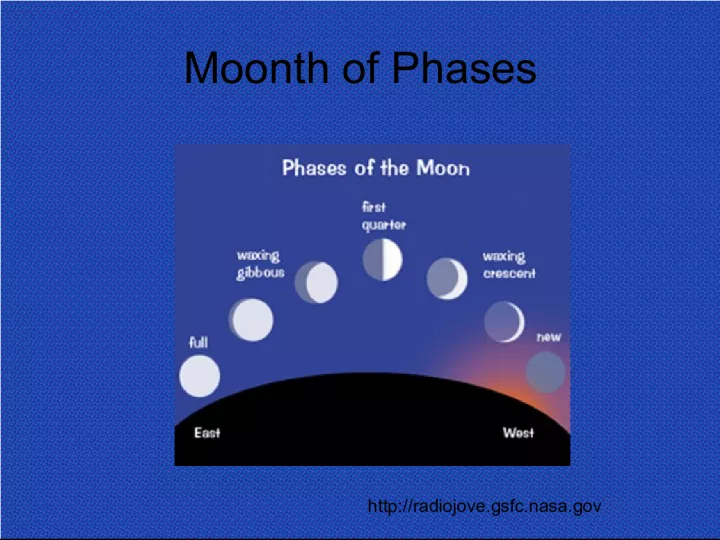

This article discusses the different phases of the moon and important terminology used to describe them. The first set of important words includes "crescent" and "gibbous," which refer to
- Uploaded on | 1 Views
-
 aelita
aelita
About Moon Phases and Terminology
PowerPoint presentation about 'Moon Phases and Terminology'. This presentation describes the topic on This article discusses the different phases of the moon and important terminology used to describe them. The first set of important words includes "crescent" and "gibbous," which refer to. The key topics included in this slideshow are . Download this presentation absolutely free.
Presentation Transcript
Slide1Moonth of Phaseshttp://radiojove.gsfc.nasa.gov
Slide2Important Words• Crescent: less than half of the moon visible to Earth is lit • Gibbous: more than half of the moon visible to Earth is lit
Slide3More Important Words• Waxing: illuminated portion of the moon facing Earth is increasing • Waxing is from the Old English weaxan meaning “to grow.” • Wax on light (from new moon to full) • Waning: illuminated portion of the moon facing Earth is decreasing • Waning is from the Old English wanian meaning “to lesson” • Wane off light (from full moon to new)
Slide4Still another important word• Quarter Moon: Half of the moon facing the Earth is illuminated But wait… if we see half the moon lit, was isn’t it called a half moon? • This is because the moon is a quarter (or three quarters) through its cycle of phases (or we see a quarter of the entire moon lit…)
Slide5Your moon model data table shouldlook like this! Be Sure To Look At The #s http://www.nmm.ac.uk/upload/img/phases.gif
Slide6In your model what represented theEarth, the Sun and the Moon? • Earth: You • Sun: the lamp • Moon: the Styrofoam ball on the stick
Slide7How much of the lighted part of theball did you see when facing the lamp? • NONE!
Slide8Explain what happened to theilluminated portion of the moon after each turn. • The portion of the moon illuminated (lit) increased with each turn until the entire moon facing the Earth was illuminated. After this the portion of the moon illuminated decreased with each turn.
Slide10Whether you could see it or not,how much of the ball’s surface was always lit by the lamp? • HALF OF THE MOON IS ALWAYS ILLUMINATED BY THE SUN! • We just do not always see all (or any) of this half here on Earth! http://www.opencourse.info/astronomy
Slide11Why do we see different phases ofthe moon? • The moon revolves around the Earth, so the relative positions of the Earth, moon and sun cause the phases • The changing amount of the lit portion of the moon visible on Earth = Phases http://www.lpi.usra.edu/
Slide12Why we have phases:http://home.hiwaay.net/~krcool/Astro/moon/moonphase/
Slide13What would happen if the modelwas not above head? • Moon would be dark at full moon location – in your shadow • Would be a lunar eclipse! http://www.dkimages.com/
Slide14Moon Info• It takes the same amount of time for the moon to rotate on its axis as it does to revolve around the Earth (27.3 days) • This is why the Earth only sees one side of the moon – in order to see the other side you need to get on a space ship and go around the moon! • There are 29.5 days from a new moon to the next new moon
Slide15Moon Info• The lit part of the moon always points towards the sun. • When waxing: light is on the right • When waning: shadow is on the right http://www.astro.virginia.edu
Slide16The moon rise, moon set• The time of the moon rise and set depends on its phase • Rises in the East and sets in the West – due to Earth’s rotation • Remember: moon rises about 50 min later each day of the moon phase cycle (~ 25 to 75 mins) • http://aa.usno.navy.mil/cgi-bin/aa_rstablew.pl • Phase Rise Time Midpoint in sky Set Time New Sunrise Noon Sunset 1 st quarter Noon Sunset Midnight Full Sunset Midnight Sunrise 3 rd quarter Midnight Sunrise Noon
Slide17Can you identify the phase?Waxing Gibbous Full Waning Crescent Waning Gibbous New Last (3 rd ) Quarter First Quarter Waxing Crescent
